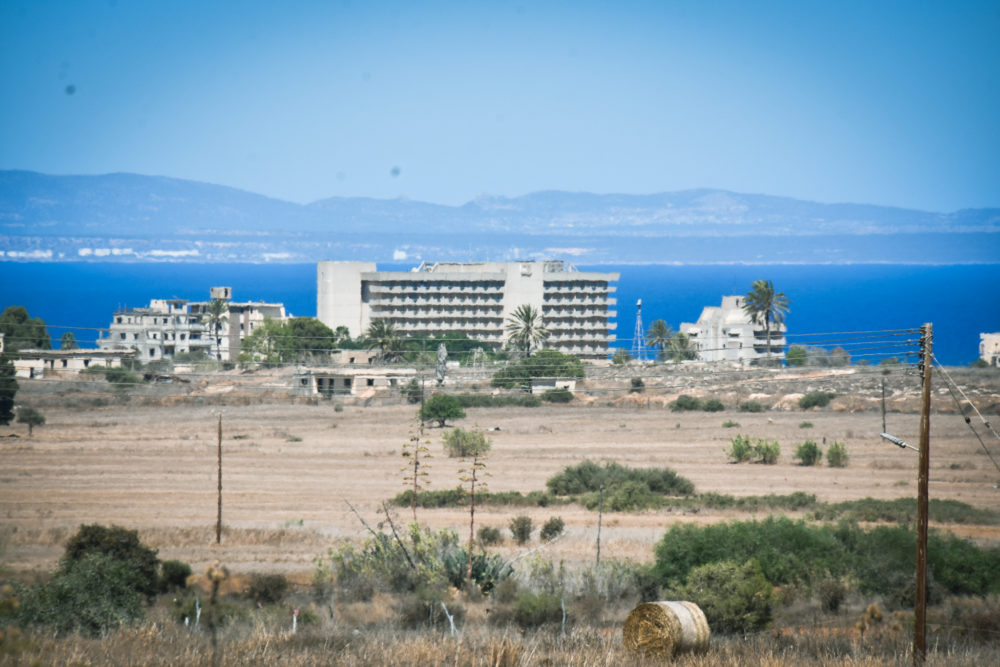September 2021: We barely made it to Cyprus. Paula lost her phone in the Athens airport on our airport connect from Santorini and by some miracle it was recovered by airport staff and waiting for us at the lost and found counter in the lost baggage area. From Athens we took the red eye flight to Larnaca, the capitol of the Republic of Cyprus and arrived at 2am in the morning.
We had one day in Cyprus. Our flight to Egypt was to depart in the evening so we decided to make the best of our time in Cyprus and as with every place I visit I try and learn as much as I can about the history and a history lesson about Cyprus isn’t complete without learning about the division of the island that occurred in the mid-70’s into two parts; Republic of Cyprus (RC) and Turkish Republic of Northern Cyprus(TRNC). RC consists of mostly Cypriots with Greek heritage and TRNC Cypriots of Turkish heritage. RC is a U.N. recognized country and the TRNC is only recognized by Turkey.
We only had about 5 hours of sleep before waking up to see as much of Cyprus as we could, and our goal was to hopefully visit Famagusta and its southern closed off section of Varosha. I knew it was a longshot to get into the TRNC due to the ever-changing Covid requirements and TRNC had some pretty wacky ones. I figured if we couldn’t enter TRNC to see Varosha, then we would go to the demilitarized zone to see it-the next best thing. This is where RNC and TRNC military forces face off along a line demarcating their separating border.
History of Famagusta
Famagusta is an old town dating back thousands of years. It was once a Venetian trading center in the region and old Venetian walls remain. Then the Ottomans invaded and incorporated it into their empire. Later, the British made it a colony and left after a guerilla war in the 50’s.
A post British Cyprus consisted of Cypriots with Turkish and Greek ethnic backgrounds. In the 70’s Turkey invaded. Greek Cypriots will say both sides lived in peace and Turkey invaded as part of a terrorist land grab and the Turkish side will say Turkey invaded to protect the Turkish Cypriots, they claim were being mistreated by Greek Cypriots. Like all things political, the issue is complicated.
At the time of the Turkish military invasion, Varosha had a population of 50,000 mostly Greek Cypriots and it was a resort beach paradise that even the Hollywood stars visited. Turkey invaded bombing the city with military planes and dozens were killed including some tourists. Greek Cypriots with no time to grab their belonging fled from their homes that had been with their families for generations to leave for the safety of the R.C. In only two days Turkey claimed the entire town.
Per a UN brokered agreement, Turkey agreed to leave Varosha un-occupied-essentially as a ghost town until the two sides could agree on a solution. A solution was never agreed upon and the town remained a ghost town on the other side of the DMZ for decades until in 2020. In 2020 Turkey decided to begin opening up Varosha to visitors and it is now possible to visit parts of it for the first time. This has outraged Greek Cypriots, many who were refugees from varosha and now live in the R.C.
Where is Famagusta

Map of Cyprus
In the morning I arranged a taxi driver, who it turns out was a refugee from Famagusta, just like our taxi driver from the night before. In fact, all of our taxi drivers were refugees from Famagusta who shared heartbreaking stories of fleeing as children while the Turkish military invaded their city. Most of the refugees from Famagusta I spoke to explained to me that even though they are allowed to travel across the border, they refuse to out of principal and out of heartbreak. One taxi driver explained he returned just to see his childhood house, and a Turkish family living there now would not let him enter to see it.
Our taxi driver recommended we get rapid Covid tests, which he said were needed to cross the border. Our plan was to cross the border for the day and return to catch our flight in the evening. We did a 5-euro rapid test with results in 10 minutes and set off for the border.
Massive amounts of half-built hotels and homes were built up along the road on the way to the border. it seemed as if there was a race to develop the region in order to better defend any claims to the land. Once we arrived at the border, there were many abandoned shuttered buildings and tattered vehicles. Our taxi driver dropped us off and said this was as far as he could go. he wished us luck and we exchanged numbers in case we couldn’t cross.
At the border we found nothing, but confusion and we were mis-directed a few times until we finally arrived at a booth with a Turkish health minister who was checking health documents. One official explained we needed to be in Cyprus for 14 days before crossing and the Turkish health official explained we needed a PCR. We pleaded and Paula tried her puppy dog face, and the official did try and help us, but his boss declined to let us in. He also explained that even if he let us in, the military official in the next booth would not. Then I was told later that even if we could enter, we may be trapped there for 14 days. There was a lot of confusion on part of everyone and we decided to just go to the DMZ to see Varosha from the overlook.
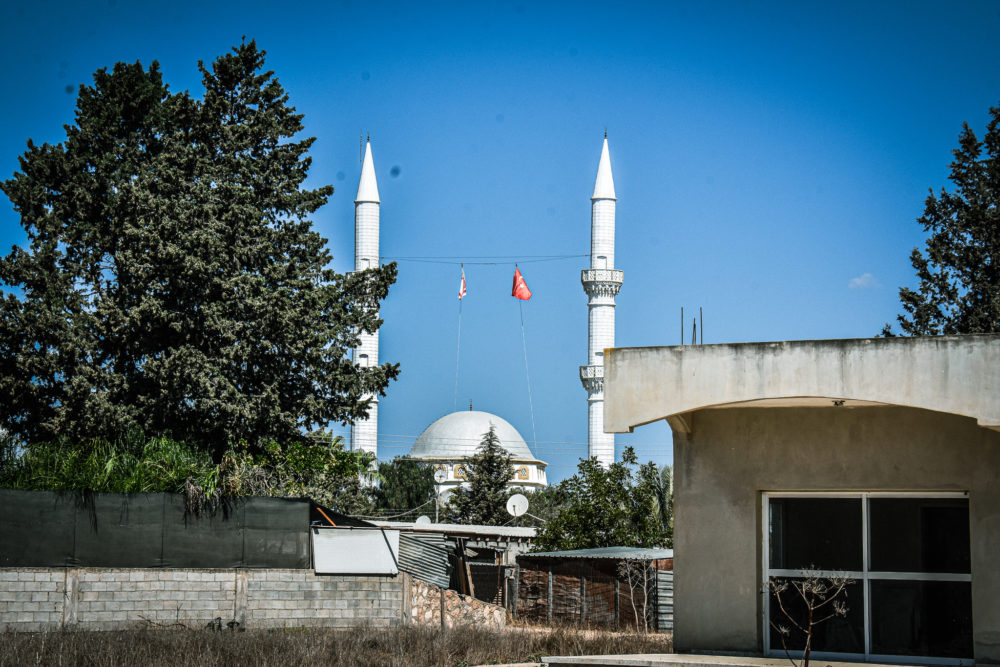
Mosque on the Turkish side of the Border of RC and TRNC
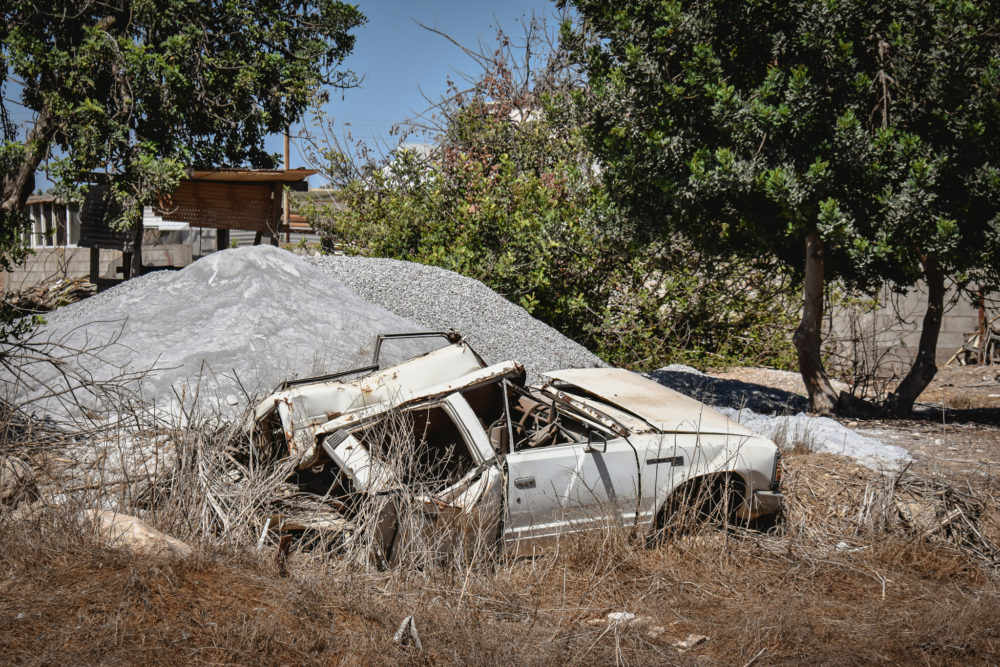
One of many abandoned cars strewn across the DMZ
Our plan didn’t work out, so we returned to the R.C and our taxi driver was already gone so we had to call a new one, who also was a refugee from Famagusta. He agreed to take us to the DMZ and Cape Greco National Park-a beautiful stretch of wild sea cliffs and caves along the way.
Cape Greco

Cape Greco
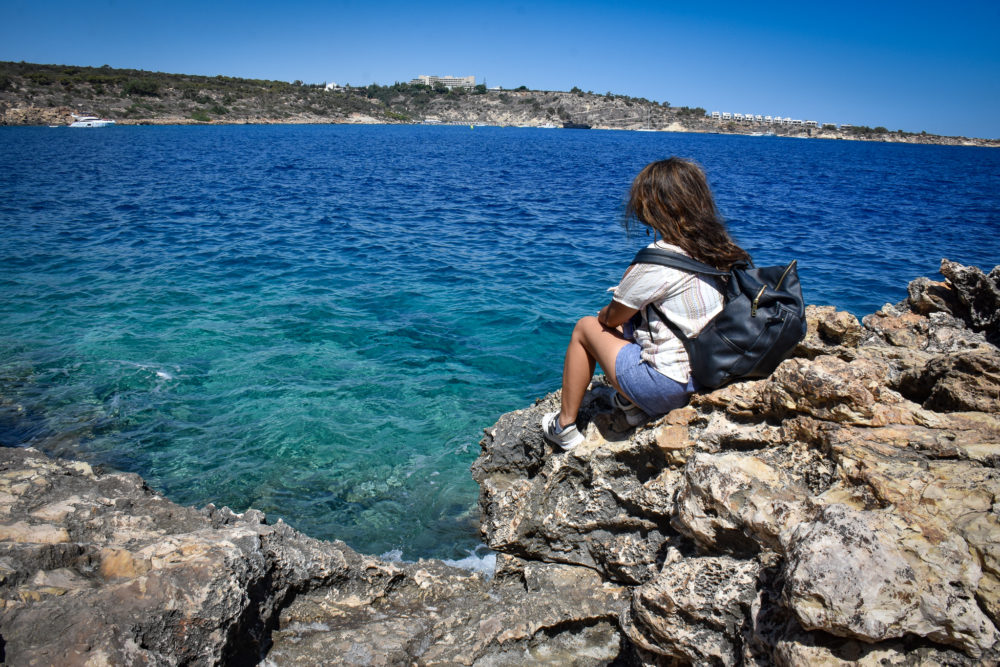
Paula at Cape Greco
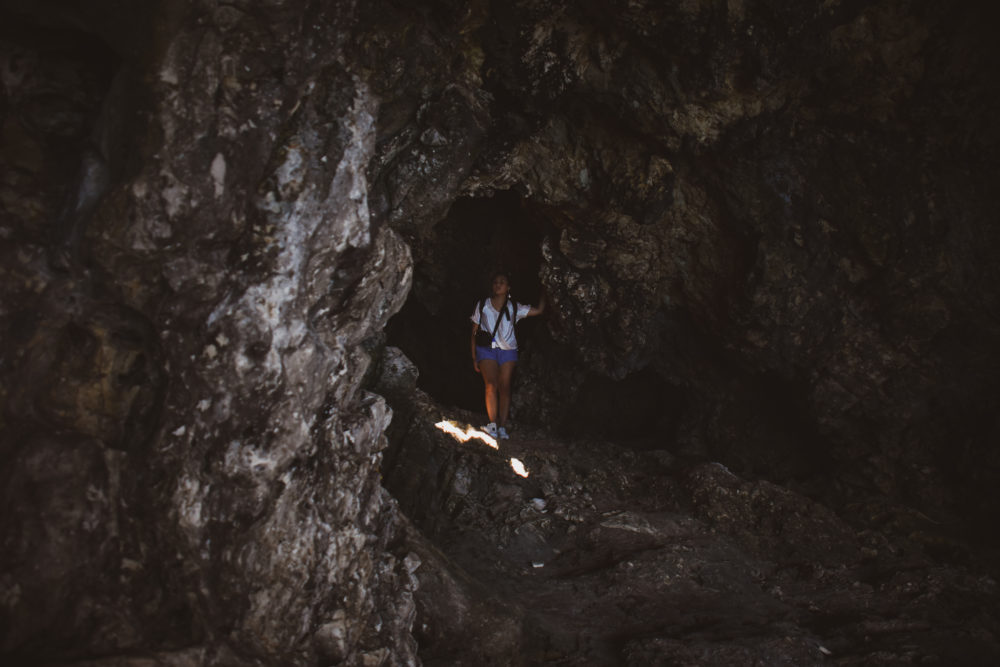
Sea cave, Cape Greco
Cape Greco was a little too crowded for my taste. The area was crawling with lots of Russian tourists. It was also blazing hot. We explored some of the sea caves, had some ice cream and set off fort he DMZ. We had a little bit of an embarrassing situation at Cape Greco-see next photo caption.
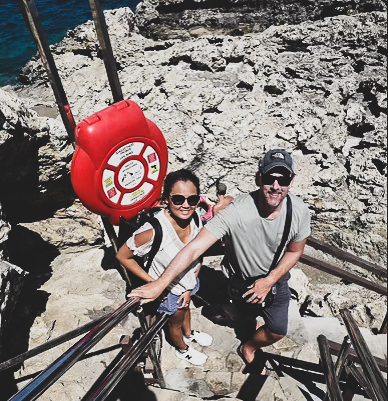
Our taxi driver, a middle-aged man, took a photo of Paula and I at Cape Greco (photo above) with his phone. When he was driving, he offered the photo to us and handed Paula his phone and said just go ahead and text the photo to yourself. Paula clicked on the photo but accidentally scrolled one photo back on his phone-which shockingly was a close-up photo of his very stimulated private parts. Paula did a good job of pretending to not see this and handed the phone back pretending that she just didn’t see a photo of his !!!!. How awkward!
De-Militarized Zone
As we came closer to the DMZ, militarized line of barbed wire, and soldier manning towers dividing the border between R.C. and TRNC, anti-Turkey propaganda (slogans, graffiti, and monuments) became common on walls and in the parks. Then the town faded away into empty scrublands as we arrived at the border. There were signs posted stating no entry, no photographs, and watch towers, U.N vehicles patrolling the border area. Then in the distance, empty and decrepit looking buildings lined the sea coast. This was Varosha on the other side of the border.
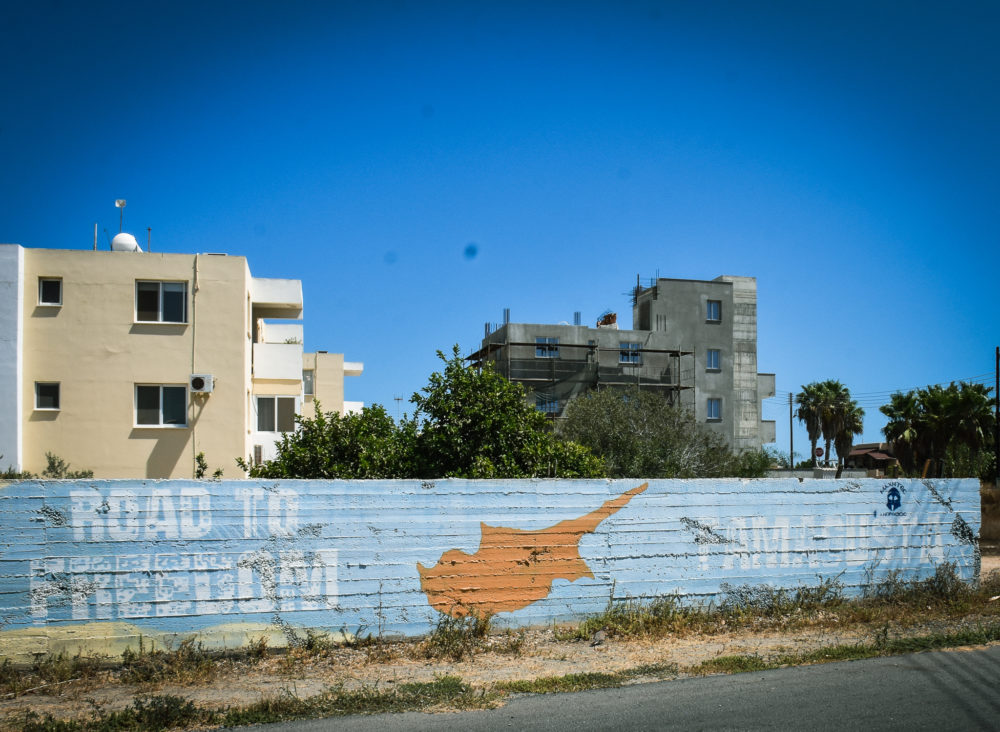
Propaganda Against Turkish Invasion
We walked to the end of the path as far as we could go to a barbed wire fence. Our driver warned us not to cross because to do so would risk arrest. He said the Turkish military is very aggressive and will detain us for days and likely remove all of our possessions from us before letting us go eventually. As we went to the fence, a U.N jeep approached us, and I half expected to the driver to hassle us, so we began walking briskly back to our car. The UN vehicle passed us un-eventfully.
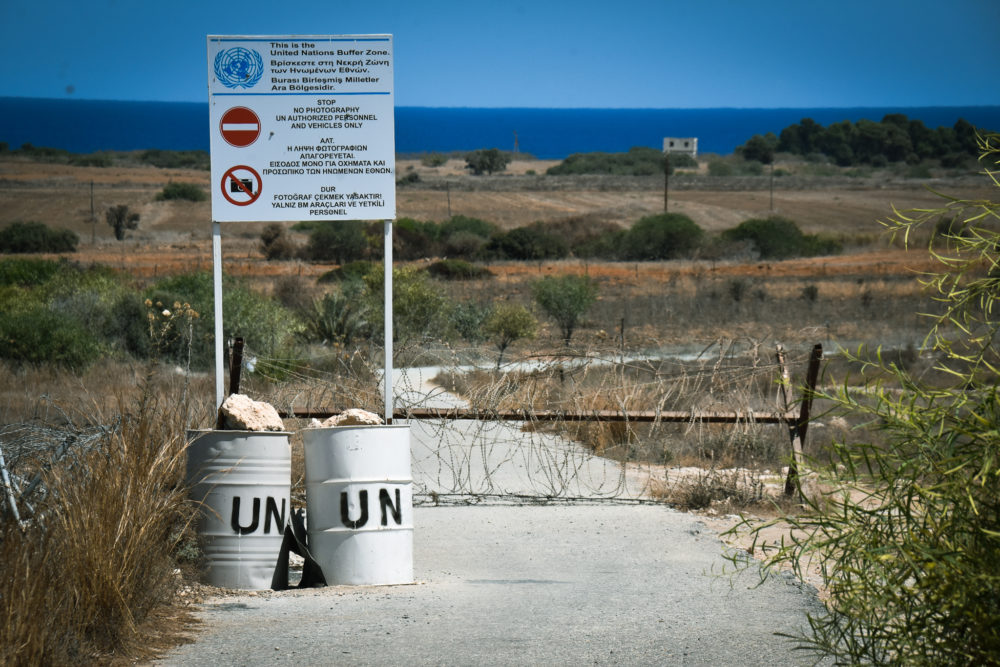
Border of DMZ that we could not pass
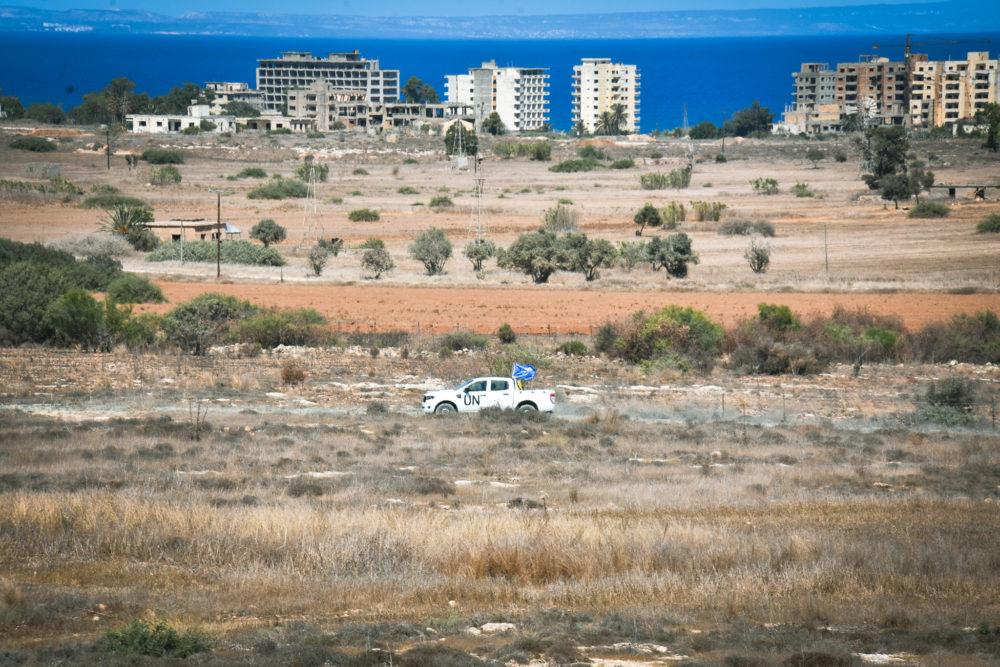
U.N vehicle patrolling the DMZ to keep the peace. In the background is the ghost town of Varosha.
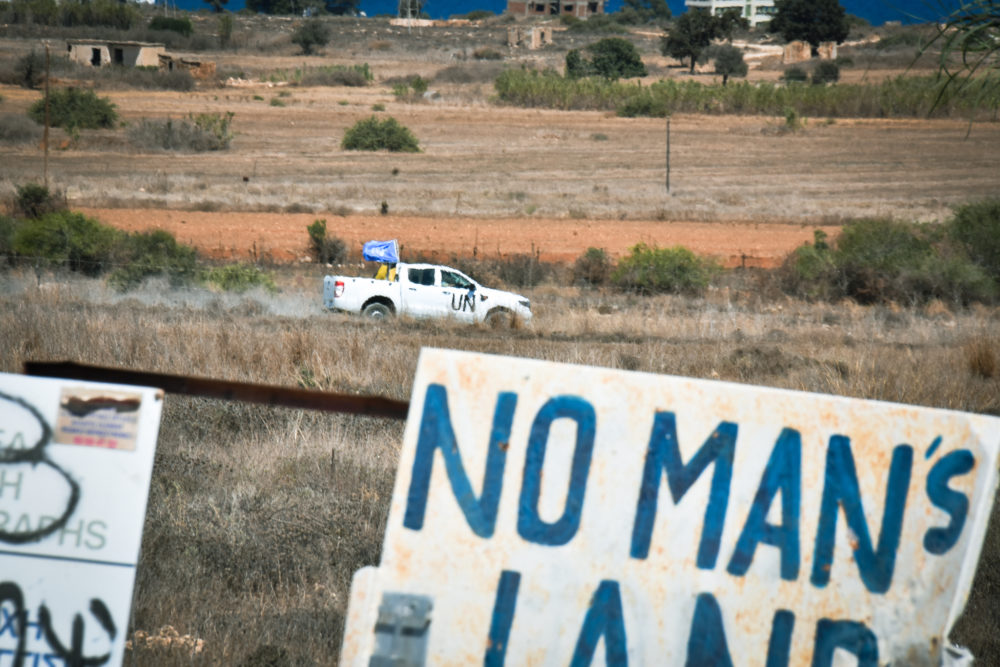
No Mans Land Sign
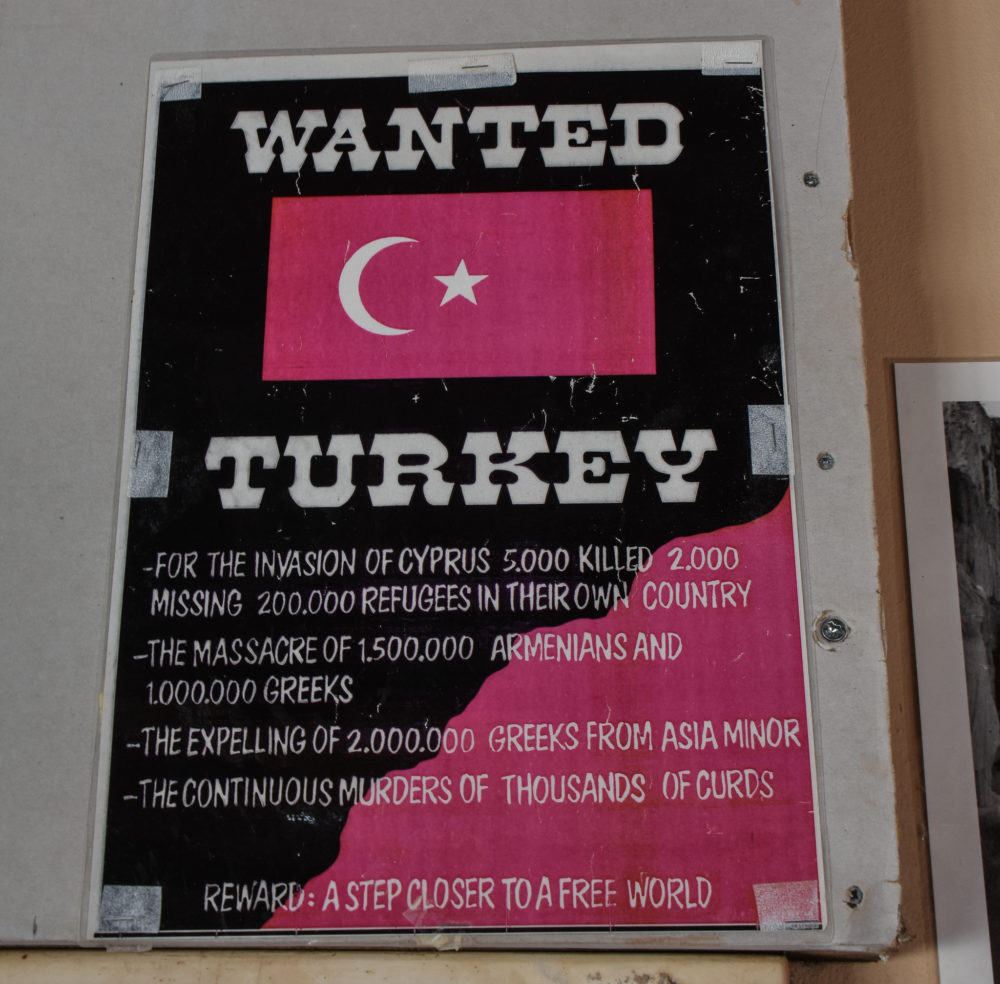
Anti-Turkey Signs at the Varosha Overlook Building on the DMZ
We climbed a tower at the DMZ to look out over Varosha. A couple of teenage kids stood there with us, looking out mournfully over the ruined city. I asked them where they were from, and they responded from Cyprus. They told me that it was heart breaking for them to look out over Varosha. I asked them if they would ever visit, and they said no. They could not because according to them it would hurt them too much to see the invaders living in their homeland.

Cypriot Military Watchtower
Larnaca
No matter what the story is and how complicated the issue may be, it was truly sad to stand with other Greek Cypriot people looking out over their lost homeland. After leaving the DMZ area, we returned to Larnaca to see some of the city and to have dinner before departing to Egypt in the evening.
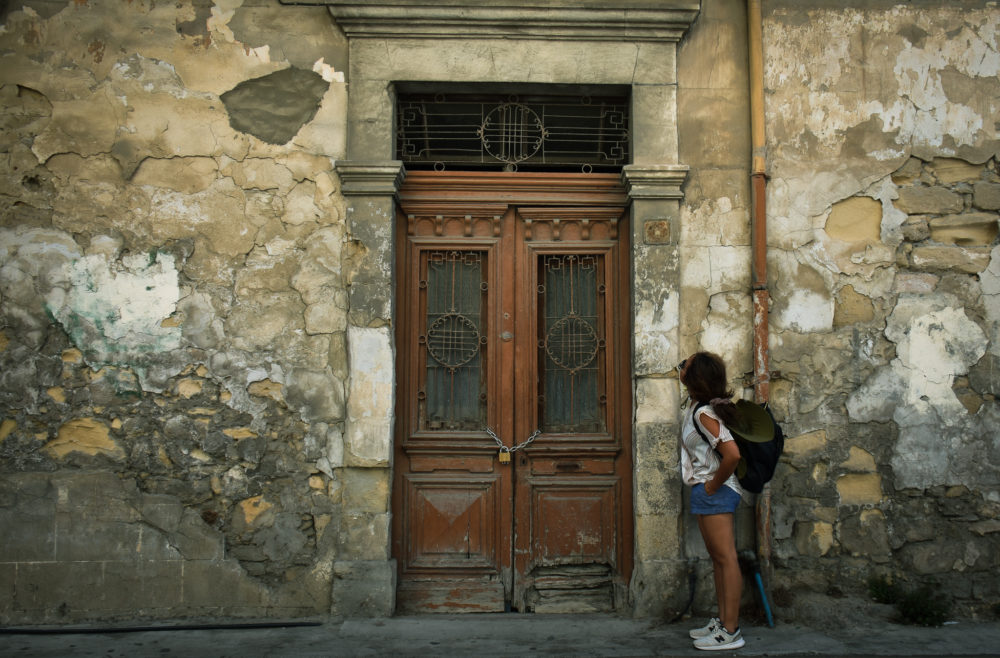
Old City of Larnaca
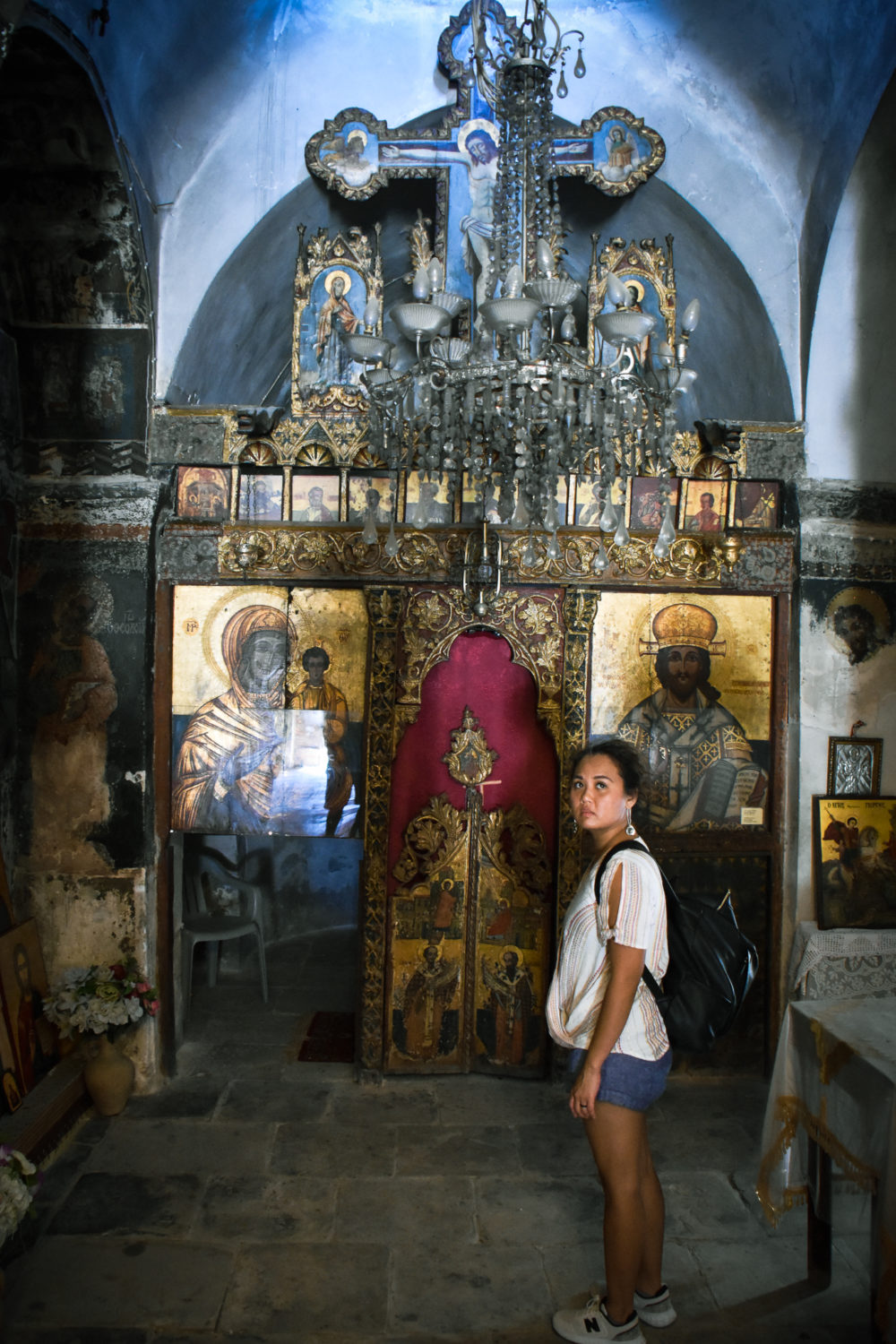
Paula inside a small orthodox roadside temple

